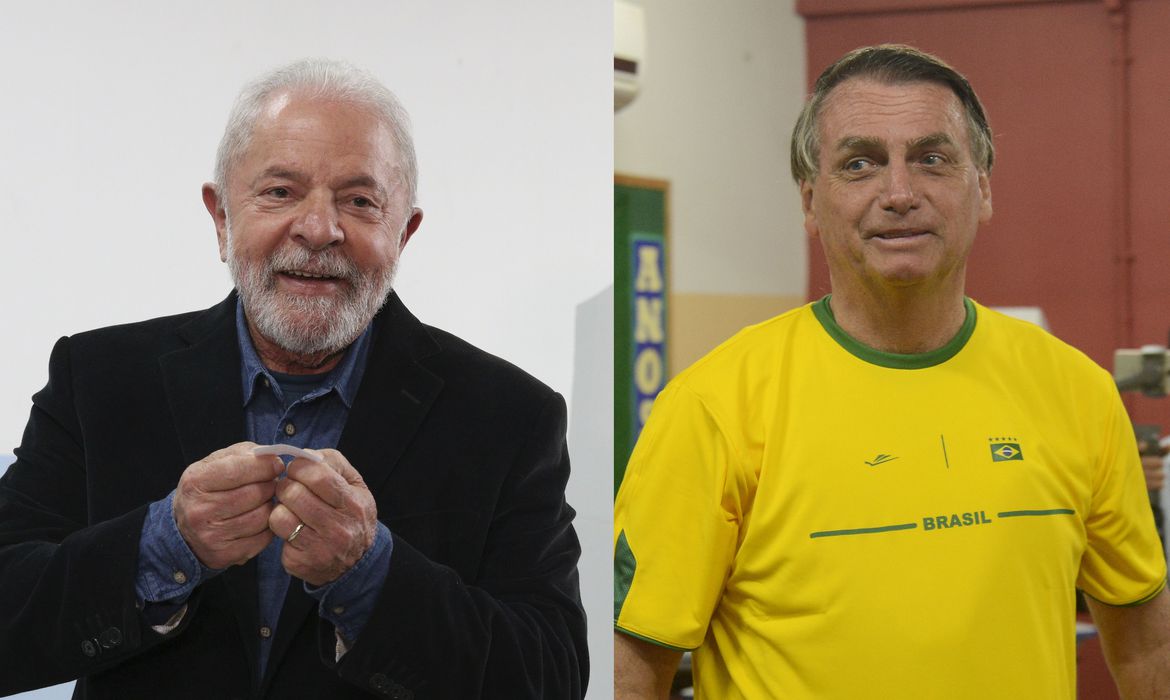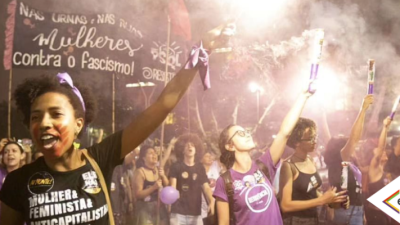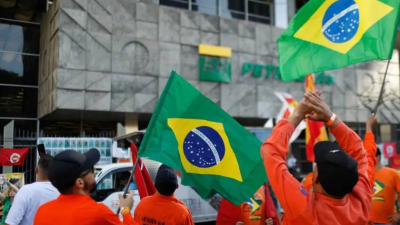The first round of the 2022 general elections brought a bitter surprise to the left-wing militancy that, following the polls, expected an electoral victory from Lula in this first round, or a passage to the second round by few votes, but with a wide margin of votes ahead of Bolsonaro.
Some lessons must be learned immediately, because our challenge is huge in the coming weeks. As we now know, electing Lula to defeat Bolsonaro will be harder and, therefore, more vital.
Where we went wrong
The first obvious but still difficult to grasp lesson is: the optimism of the will can never replace the realism of the analysis. The social force of bolsonarist neo-fascism (as well as Bolsonaro’s vote in relation to the first round of 2018) grew and solidified. The impressive stability of an electoral support of about a third of the electorate, despite the fluctuations, captured in polls throughout his term, despite all the nauseating trail of destruction and death of these four years, is the biggest sign of this. In addition, the strength of “anti-Ptism”, which manifests itself in many segments of society, especially in the Center -South of the country, was underestimated, as if it had been largely overcome after the annulment of the processes and Lula’s rise in the polls (from April 2021). The “anti-PTism” is still capable of moving a “useful vote” for Bolsonaro, as was evident by the much higher vote for Bolsonaro in São Paulo and in Rio de Janeiro than the electoral polls had captured.
The second lesson is that election polls need to be read not just mathematically, but in the light of political and social dynamics that are deeper than the picture of a given moment with a given sample of voters. In a superficial analysis, the polls got right (within the margin of error) Lula’s vote as well as Simone Tebet’s overtaking of Ciro Gomes 3rd position. And they were wrong, pointing to much less, in Bolsonaro’s vote and to much more in Ciro’s case. It is clear that there was a migration of votes from Ciro, mostly, to Bolsonaro – which our previously mentioned optimistic illusion did not capture, as it insisted on the idea that Ciro’s voters would go with Lula, moved by a center-left perspective. In reality, however, these voters had the anti-Ptism as their main motto. But that alone would not explain Bolsonaro’s vote.
It is easy to see that the far right, around the world, has often had a greater effective vote than that captured by election polls. One can speculate that a mix of “embarrassed” voting and “self-fulfilling prophecy” (if I believe polls are liars, I won’t tell them the truth) explains this data, complemented by the ones to refuse to answer to polls. But, at least in the specific case of Brazil (and in the United States studies have shown something similar with the vote for Trump), it is a fact that the polls captured a majority of votes for Lula in the lower income strata of the population and the opposite regarding Bolsonaro’s electorate. The lower income strata is, historically, the one who abstain the most in elections. They are internal migrants with no regularized electoral domicile, people who do not have the resources to even pay for transportation to the polling station (which in large cities, especially the megalopolises of the Southeast, can be very far away, due to housing changes along life) and segments in which the daily struggle to survive can be so hard that it makes the national political calendar and the exercise of political citizenship processes from which they are completely disconnected. The abstention in this first round was 20.95% of the voters, the highest in the last 20 years. Polls cannot adequately weigh this factor.
Just as they cannot capture that impulse – positive by convincing, or negative by intimidation – at the last minute, driven by family pressure, in the neighborhood, at work, etc. The fact is that, with the exception of the Northeast (and even in this region with many mediations), the molecular growth of voting intentions for Lula in recent weeks did not gain public visibility from a wave of shirts, flags and crowds in the streets. Meanwhile, the bolsonarist green and yellow dress code is ostensibly visible and intimidating, and this had a weight in the final stretch that escaped the record of the polls. The fear and intimidation of political violence, imposed by the more openly neo-fascist face of Bolsonarism, had the effect of limiting the visibility of the support for Lula, particularly in the Southeast. Many people made the vote for Lula a silent resistance. Silent resistance is not enough to give strength to those who suffer greater coercion, or to convey the certainty that you are in the right boat for the undecided who, amazingly, still exist.
We can’t go wrong anymore
In light of this situation, the first lesson that we should learn from this first round is to get rid of any self-deceptive optimism, like the one that has been circulating in our bubble since the end of the counting of the votes, with messages about the growth of the left-wing benches in the Chamber of Deputies and in some state assemblies. A growth relative to its own minority status, which is far from being surpassed. On the other hand, the “Centrão” bench was strengthened in the Chamber of Deputies, as was to be expected from the pornographic electoral use of the so-called “secret budget”. In the Senate, boosted by the election of the current vice-president and arch-reactionary former ministers, the Bolsonarist bench has grown enough to, if Bolsonaro is re-elected, advance to impeachment proceedings against STF ministers. If the mandates won by the left have any use at the moment – and they undoubtedly do – their first test of fire is to maintain in the streets the militancy that campaigned for proportional candidacies, to elect Lula in the second round.
Just as self-deceptive is the optimism of the mathematical calculations that elude the political and social struggle – “Lula has a six million votes advantage”, “all we need is 2% more of the voters” and other similar self-help phrases. Bolsonaro had a place to draw votes from in the final stretch of the first round to get closer to Lula and may still have more “reserve fund”, in the voters of Tebet, Ciro and in the white and null votes. Even more so if we learn, once and for all, that the campaign of a neo-fascist does not move only along the illuminated paths of the “rules of the game” of this “democracy party”, on which the commentators on duty so insist.
For this very reason, the institutionalist reasoning that, until now, has dominated the PT campaign leadership, that it is enough to add more formal support to the broad electoral front, can be disastrous in this second round. The eventual formal support from PDT (against Ciro’s will) and from MDB does not guarantee anything. These parties have already elected their parliamentarians, MDB will be running only for two state governments in the second round (PDT not even that) and, in such a polarized dispute, they are unlikely to enthusiastically embrace Lula. Even if they do so, nothing guarantees that their votes will be inherited by PT. The signal given in the first round regarding Ciro’s dehydration was, in fact, the opposite. Further meetings with the “GDP champions” upstairs won’t be enough, either. They don’t have neither a veto nor a vote to offer Lula. The most organic party that the Brazilian bourgeoisie built in the New Republic, PSDB, knelt to Bolsonarism and collapsed. With the defeat in the governor election in São Paulo, its last institutional stronghold fell.
To defeat Bolsonarism on October 30, and this is the main lesson we need to learn from the result of the first round, will require people on the streets, with Lula, to transform the current electoral majority into a wave of popular support, visible and expressive enough to drag parts of those who abstained in the first round, the uncorrupted voters of the other candidates and to guarantee confidence to those constrained and threatened by the truculence of neo-fascism that it is possible to remove Bolsonaro from the palace.
It will be necessary to drag Lula through the crowd, as on the slopes of Salvador, make him bounce in the middle of the crowd, as in the streets of São Paulo, transforming the next four weeks into the most intense process of political and social mobilization in recent times. Even if his campaign coordination continues to bet on deals with party leadership and bourgeois representations, it is necessary to push him towards the streets. A new “Ele Não [Not him!]” will have to sprout. The decisive vote will come from expanding the advantage where it already exists: in the most impoverished parts of the working class, in women, in the black people, in the youth, in the Northeast.
That’s because our future depends on it and because we owe it to the memory of the almost 700 thousand victims of the pandemic; to those who fall in the daily police massacres, transformed into political propaganda by militia governors; and the millions of people who are starving.
“The only fight that is lost is the one that is abandoned”. Let’s not give up on this one.










Comentários